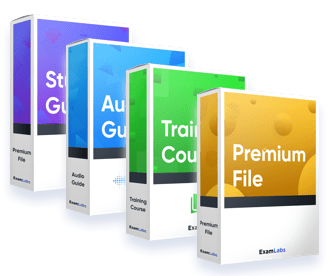practice exams:
Pass Microsoft Certified: Data Analyst Associate Exams At the First Attempt Easily
Real Microsoft Certified: Data Analyst Associate Exam Questions, Accurate & Verified Answers As Experienced in the Actual Test!
Microsoft Certified: Data Analyst Associate Certification Exam Practice Test Questions, Microsoft Certified: Data Analyst Associate Exam Dumps
Stuck with your IT certification exam preparation? ExamLabs is the ultimate solution with Microsoft Certified: Data Analyst Associate practice test questions, study guide, and a training course, providing a complete package to pass your exam. Saving tons of your precious time, the Microsoft Certified: Data Analyst Associate exam dumps and practice test questions and answers will help you pass easily. Use the latest and updated Microsoft Certified: Data Analyst Associate practice test questions with answers and pass quickly, easily and hassle free!
The Microsoft Certified: Data Analyst Associate certification validates the skills of the candidates in preparing, modeling, analyzing, and visualizing data as well as maintaining & deploying deliverables. To get this certificate, the applicants must pass a single exam, Microsoft DA-100.
The target candidates for this associate-level certification are the individuals performing the role of a Data Analyst. These professionals help the organizations use Microsoft Power BI to optimize their data assets and value. They are responsible for building and designing scalable data models, allowing advanced analytic abilities that offer meaningful values via understandable data visualization, and cleaning & transforming data. The certificate does not have any formal prerequisites. However, the applicants must develop their solid skills in the exam topics before sitting for the test.
Exam Details
The Microsoft DA-100: Analyzing Data with Microsoft Power BI test is a qualifying exam for obtaining the Microsoft Certified: Data Analyst Associate certification. This is a 120-minute test containing 40-60 questions. There are different formats of questions that you may encounter in it. They include hot area, multiple choice, active screen, scenario-based, short answer, best answer, and drag and drop. To earn the certificate, the candidates must gain a minimum passing score of 720 points out of possible 1000. Those individuals who score below this mark will be required to retake the exam before they can get certified. The fee for taking this certification test is $165 and the applicants can register and take it in English, Korean, Simplified Chinese, or Japanese. The details of the registration process can be found on the vendor’s website and the Pearson VUE platform.
To prepare for the Microsoft DA-100 test, the students can start with the official preparation tools. Microsoft offers two different pathways to preparing for this exam – free online learning paths and paid instructor-led training courses. The first option covers six different tutorials. The individuals can explore these paths to gain competence in the topics of the test. The instructor-led training course, DA-100T00-A: Analyzing Data with Power BI, teaches the candidates best practices and different techniques that align with the technical and business requirements for visualizing, analyzing, and modeling data with Power BI. The applicants will also develop the relevant skills in accessing and processing data from different data sources such as non-relational and relational data. Additionally, they can check out the third-party study materials, including practice tests, from reputable IT platforms to adequately prepare for their certification exam.
Exam Topics
The Microsoft DA-100 exam is developed to measure the competence of the candidates in accomplishing certain technical tasks. Their details are enumerated as follows:
Preparing Data: 20-25%
- Receiving Data from Different Data Sources: It covers your skills in identifying & connecting to data sources; changing data source settings; choosing storage mode & shared dataset or creating local datasets; using or creating data flows and PBIDS file; using parameters and Microsoft Dataverse; identifying the issues with query performance.
- Profiling Data: It requires one’s competence in identifying data anomalies; examining data structures; interrogating data statistics & column properties.
- Cleaning, Transforming, & Loading Data: The candidates should demonstrate their competence in resolving inconsistencies, null or unexpected values & data quality concerns. It also covers their expertise in resolving data import errors, configuring data loading, combining queries, measuring and transforming column data types.
Modeling Data: 25-30%
- Designing the Data Model: It requires the individuals’ skills in determining quick measures, tables, role-playing dimensions, relevant levels of data granularity, and cardinality & cross-filter direction of relationships. It also covers their competence in designing data models to fulfill the performance prerequisites and resolving many-to-many relationships.
- Developing the Data Model: It covers your competence in creating hierarchies, calculated columns, and calculated tables; applying security filtering and cross-filter direction; implementing row-level security roles, and setting up Q&A features.
- Creating the Measures with DAX: It requires using DAX for building complex measures and using CALCULATE for the manipulation of filters. The test takers also need to demonstrate their competence in creating semi-additive measures and replacing numeric columns using measures.
- Optimizing Model Performance: The examinees must possess the competence in improving cardinality levels via changing data types and summarization; eliminating redundant columns and rows; creating and managing aggregations; determining poorly performing relationships, visuals, and measures.
Visualizing Data: 20-25%
- Creating Reports: This subtopic focuses on including visualization elements into reports; selecting the relevant visualization types; configuring & formatting visualizations; importing custom visuals; applying filtering & slicing; configuring report pages; creating paginated reports; configuring automatic page refreshes; configuring conditional formatting.
- Creating Dashboards: It covers the learners’ skills in setting mobile view; handling tiles on dashboards; configuring data alerts; adding dashboard themes; using Q&A features; pinning live report pages to dashboards.
- Enrich the Reports for their Usability: It requires one’s skills in configuring bookmarks; creating custom tooltips; exporting report data; using selection pane and drill through & cross filter; applying to sort; configuring navigation for reports; drilling down into data with interactive visuals; designing reports for the mobile devices.
Analyzing Data: 10-15%
- Improving Reports to Reveal Insights: The applicants should have the expertise in applying slicers & filters; applying conditional formatting; using Q&A visual; performing top-N analysis; personalizing visuals; creating reference lines with Analytics pane; using the Play axis features of visualization.
- Performing Advanced Analysis: It requires your competence in determining outliners; using groupings & binnings; using Key Influencers for exploring dimensional variances; applying AI Insights; applying decomposition tree visuals for breaking down measures.
Deploying & Maintaining Deliverables: 10-15%
- Managing Datasets: It covers the students’ skills in configuring dataset scheduled refreshes; configuring incremental refresh settings; offering access to datasets; configuring large dataset format; promoting or certifying Power BI datasets; determining the downstream datasets dependencies; configuring large datasets format.
- Creating & Managing Workspaces: The candidates should demonstrate their competence in configuring subscriptions; creating & configuring workspaces; assigning workspace roles; publishing, updating, and importing assets within a workspace; using deployment pipelines; applying sensitive labels for workspace content.
Career Path
Microsoft Certified: Data Analyst Associate is an associate-level certification. The professionals with this certificate can explore a variety of career opportunities in the Data domain. Some of the job roles that they can take up include a Data Analyst, a Financial Analyst, an Associate Analyst, a Senior EHS Analyst, a Business Analyst, an IS Business Analyst, and an Asset Management Analyst, among others. The salary outlook for this certification is an average of $78,000 per annum.
Microsoft Certified: Data Analyst Associate certification exam dumps from ExamLabs make it easier to pass your exam. Verified by IT Experts, the Microsoft Certified: Data Analyst Associate exam dumps, practice test questions and answers, study guide and video course is the complete solution to provide you with knowledge and experience required to pass this exam. With 98.4% Pass Rate, you will have nothing to worry about especially when you use Microsoft Certified: Data Analyst Associate practice test questions & exam dumps to pass.
How to Open VCE Files
Please keep in mind before downloading file you need to install Avanset Exam Simulator Software to open VCE files. Click here to download software.
Enter Your Email Address to Proceed
Please fill out your email address below in order to purchase Certification/Exam.
Provide Your Email Address To Download VCE File
Please fill out your email address below in order to Download VCE files or view Training Courses.
-
Trusted By 1.2M IT Certification
Candidates Every Month
-
VCE Files Simulate Real exam
environment
-
Instant download After
Registration





